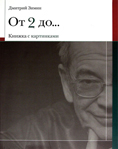Finally we reached Moldavia.
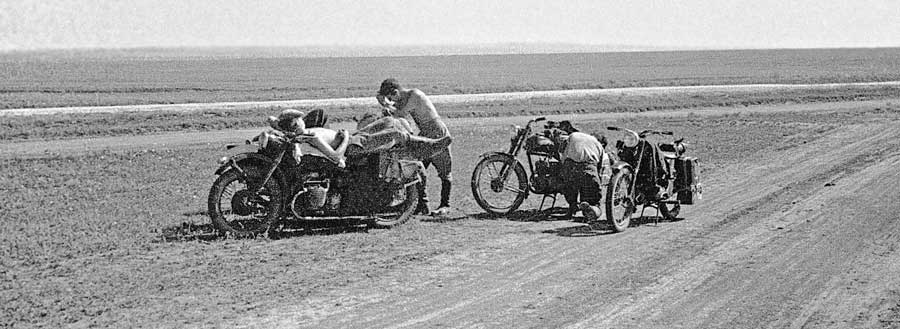

УWhat a night over the Moldova steppeЕ
and the crucified Christ by the well is looking sadly at the roadЕФ
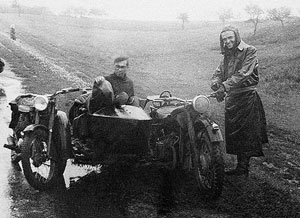
But IТd be damned if I remember why.
I have to say with regret that
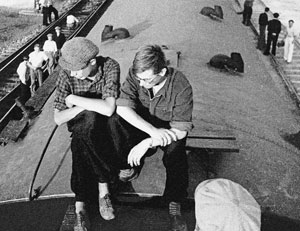 IТve never been back to most of the worthwhile places that we visited back then Ц Lvov, Uzhgorod, Moldavia.
IТve never been back to most of the worthwhile places that we visited back then Ц Lvov, Uzhgorod, Moldavia. On the way back, via Kharkov, we took the newly opened Moscow-Simferopol route, which seemed to be the only decent road at the time. The Moscow-Leningrad and Moscow-Minsk roads were in considerably worse condition.
The end of August, autumn rainsЕ We declared code УNo matter what, weТre going, regardless of the weather. Home, to Moscow!Ф We took turns napping in the sidecar.
I am publishing this picture in the hopes that someone will respond, although I know for sure that at least one person never will.
I canТt remember who took this picture, but the camera was definitely mine.
And nowadays, can you swim in the canal off the Volokolamskoye? My interest, though, is purely platonic, and I am asking this question out of sheer curiosity.
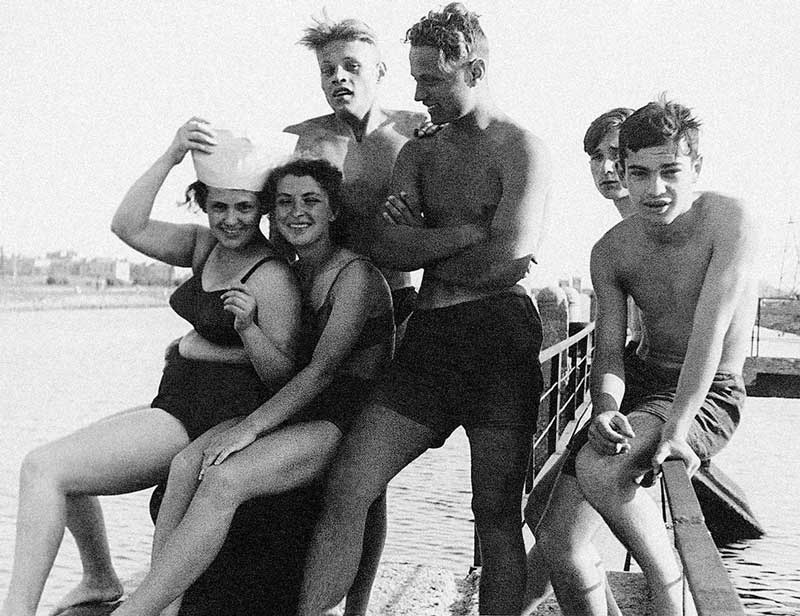
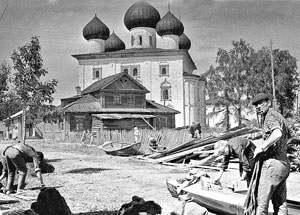 Now, these are the 60Тs, a kayak trip down the Onega River, and we are not students any more. As is well known, this river originates from Lake Lacha near Kargopol, and flows into the White Sea. (Having employed the somewhat tongue-in-cheek expression Уas is well known,Ф I remembered the phrase that IТd read somewhere in the Book of Guinness Records: УAtlantis, as is well known, is situated where the now sunken Lemuria used to be.Ф I quote from memory.)
Now, these are the 60Тs, a kayak trip down the Onega River, and we are not students any more. As is well known, this river originates from Lake Lacha near Kargopol, and flows into the White Sea. (Having employed the somewhat tongue-in-cheek expression Уas is well known,Ф I remembered the phrase that IТd read somewhere in the Book of Guinness Records: УAtlantis, as is well known, is situated where the now sunken Lemuria used to be.Ф I quote from memory.)
In this town on the banks of the Onega we assembled our kayaks and set off downstream.
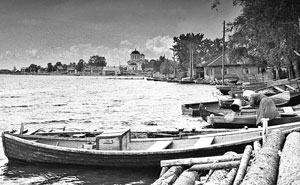
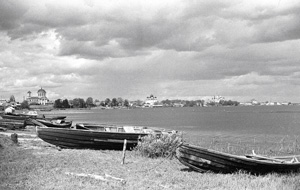 If ever by good fortune I go back to Kargopol, I will try to locate the points in the city (they seem to be places of some importance) from which these two pictures were taken, and re-shoot them. It would be interesting to see the changes that have occurred over the decades.
If ever by good fortune I go back to Kargopol, I will try to locate the points in the city (they seem to be places of some importance) from which these two pictures were taken, and re-shoot them. It would be interesting to see the changes that have occurred over the decades.
And here are a few pictures of the view along the Onega river.
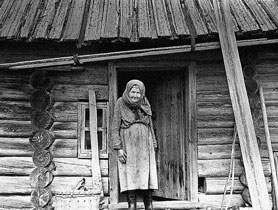
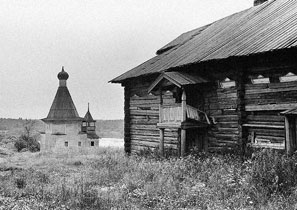
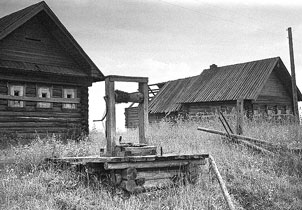
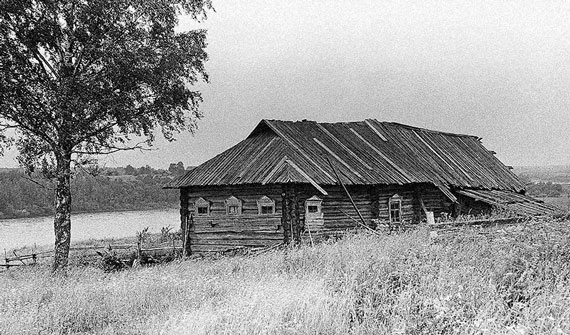
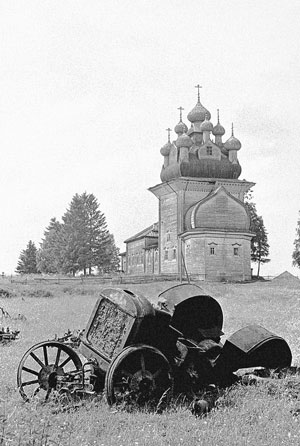
УTowards the second half of the 1980Тs our country became the global leader in the production of low-quality technical equipment. Lagging the USA in grain production by the factor of 1.4, we outdid them in tractor production by 6.4 times, and in grain combine production by 16 (!) times. American industry would have to toil for 70 years to produce as many combines as were languishing in our repair shops in 1987. It was an economy of planned absurdity, and could not help but go bust.Ф
I would add to this the mountains of arms produced, whose destruction will undoubtedly burden future generations. But it seems that these are meant to grow only higher at present.
